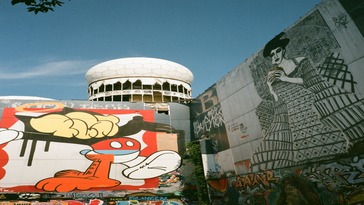ADVERTISEMENT
ADVERTISEMENT
Funding public art projects plays a crucial role in shaping the identity and vibrancy of communities. From sculptures and murals to interactive installations, public art has the power to transform public spaces, fostering a sense of pride, unity, and cultural richness. However, realizing ambitious public art projects often requires substantial financial support.
The Importance of Public Art
Before delving into the funding aspects, it is essential to understand the significance of public art. Public art goes beyond mere aesthetics; it reflects a community’s values, history, and aspirations. These projects create focal points that draw residents and visitors alike, contributing to a shared sense of identity. Moreover, public art has been linked to economic development, tourism, and improved overall well-being.
ADVERTISEMENT
The Challenges of Financing Public Art
While the benefits of public art are evident, funding these projects can be a major hurdle. Traditional funding sources, such as government grants and private donations, may not always be sufficient or readily available. This is where the idea of loans for public art projects comes into play. By exploring financial instruments traditionally associated with business ventures, communities can secure the necessary resources to bring their artistic visions to life.
Loans for Public Art: A Viable Solution
In recent years, the concept of securing loans for public art projects has gained traction. This innovative approach involves borrowing funds from financial institutions or philanthropic organizations with the aim of investing in projects that enrich community spaces. These loans can be structured in various ways to accommodate the unique needs and timelines of public art initiatives.
The Advantages of Using Loans
Immediate Access to Funds: Loans provide communities with immediate access to the capital needed to kickstart public art projects. This enables timely execution, preventing delays that may arise from waiting for grant approvals or donation pledges.
Flexibility in Project Design: With funds readily available, communities have greater flexibility in designing their public art projects. They can explore a wider range of artistic ideas and concepts, ensuring that the final result is both impactful and aligned with the community’s vision.
Community Involvement: Securing loans for public art encourages community involvement and ownership of the project. Knowing that the community is investing in its own cultural enrichment fosters a sense of pride and commitment among residents.
Economic Stimulus: Public art projects, funded through loans, can act as catalysts for economic growth. The infusion of funds into the local economy during the planning and execution phases can generate jobs and stimulate businesses, creating a ripple effect of positive economic impact.
Long-term Sustainability: Repayment of the loan can be structured in a way that ensures long-term sustainability for the community. By carefully managing finances and exploring revenue-generating opportunities linked to the public art, communities can establish a self-sustaining model for future projects.
Case Studies: Successful Implementation of Loans for Public Art
Communities leveraging loans for transformative public art projects, like XYZ City’s strategic loan to commission interactive sculptures, showcase positive impacts on culture and economy. The visually stunning installations drew visitors, increasing foot traffic and benefiting local businesses. XYZ’s successful synergy between art and commerce exemplifies the economic viability of using loans for public art, transforming urban landscapes and fostering cultural vibrancy with sustainable economic growth.
Challenges and Considerations
While loans offer a viable solution for funding public art, communities face the intricate task of balancing artistic vision with financial realities. It is crucial to meticulously assess the feasibility of projects within allocated budgets, considering potential overruns and unexpected costs. Striking partnerships with local businesses and philanthropic organizations can diversify funding sources, alleviating the burden on loan repayments and fostering shared responsibility. Communities must engage in comprehensive risk assessment, ensuring long-term sustainability and community support. This multifaceted approach is essential for transforming public spaces into enduring cultural assets, enriching communities while responsibly managing financial obligations.
Funding for public art is a critical element in creating vibrant and culturally rich community spaces. Exploring loans as a financing option opens up new possibilities for realizing ambitious and impactful projects. By carefully navigating the challenges and embracing the advantages of this approach, communities can leverage loans to enrich their public spaces, fostering a lasting legacy of art, culture, and community pride.





